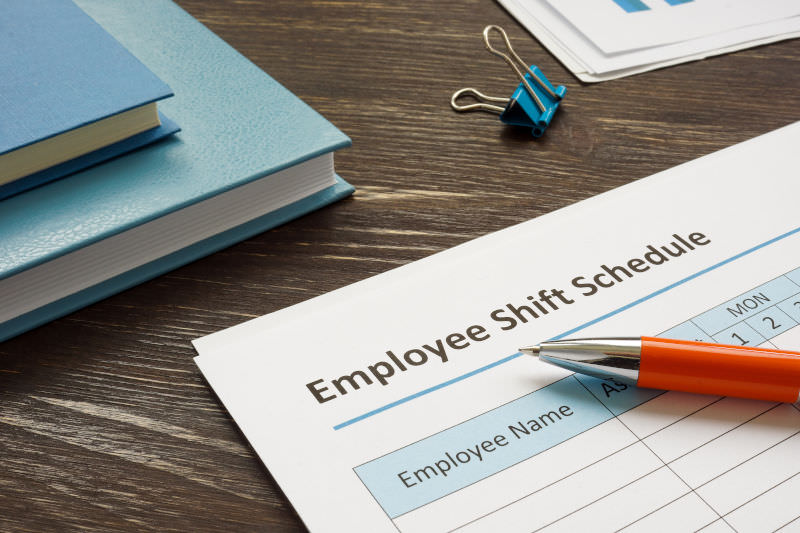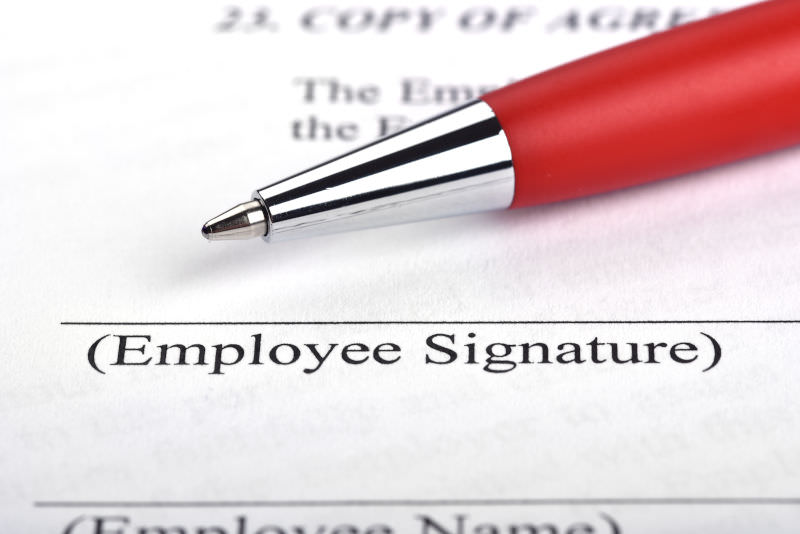Making a claim to an Employment Tribunal is usually the final step, when trying resolve a dispute with an employer. Before we get to that point, however, there are many other tools which may solve your problem without the need to start a claim. In principle and in my experience, not many people would want to bring matters to a court or tribunal, because the process inevitably consumes a lot of time, energy and money. In addition, there is always a risk of losing and not getting any compensation at all.
Making a Tribunal a claim only really happens when there is an escalation of the problem, or when the parties to the dispute are unable to reach a compromise. Of course, sometimes there is no other possibility but to submit a claim right away but even then, the appropriate conditions for making a grievance, first to the employer, ought to be fulfilled.
Important note – failure to follow the recommended procedures may result in a 25% reduction in the value of the compensation. (Section 207a of the Trade Union and Labour Relations (Consolidation) Act 1992).
Most employers have an internal grievance procedure which employees should usually follow. If there is no internal procedure an employee can follow the recommended practices established by ACAS. The relevant information about grievances can be found in the ACAS Code of Practice on Disciplinary and Grievance Procedures.
What is a grievance?
Usually it is the raising of a concern or the making of a compliant about some disturbing issue or a problem at work. You may wish to raise a concern about a particular behaviour, unwanted conduct, situation or changes to the terms and condition of an employment contract. For example, a grievance may refer to:
- How someone is treated at work. For example, if someone is a subject to unwanted conduct, discrimination, harassment, verbal or physical aggression, etc. The list is unfortunately long and non-exhaustive;
- Changes to the terms of the employment contract which the employee does not accept;
- New practices or organisational changes in the workplace;
- Violation of Health and Safety laws; The use of unfair practices that are not in the public interest;
- Any other problem that you think is unacceptable and should be resolved.
How to make a grievance?
A grievance can be started informally through a conversation with a supervisor, manager, or any other person that may have the authority to assist with the issue. Sometimes it may be good practice to talk to someone you trust at work or with whom you have good contact. If this method does not fix the problem, then you may need to make a formal written complaint. In some cases, it is necessary to proceed immediately to a written complaint.
In particular, in serious situations, such as discrimination on the basis of sex, such cases should be treated very seriously and formally by the employer. In my experience, sometimes the initial raising of the issue verbally can lead to attempts to conceal the issue, potentially leading to the destruction of any relevant evidence or the trivialising of the case.
Types of a written grievance?
Grievances can take the form of letters, e-mails, text messages. Grievance could also be contained in messages through social networks (if the employer officially uses such, for example, Facebook, Twitter, etc.) In my opinion, one of the best ways to send a grievance is to send an email, with the grievance set out, or with an attached letter. By sending an email you will have proof that the email was sent, to whom, on which date, and at what time and what was in the email. Equally, you could post a letter or hand-deliver a letter to a relevant person. Do remember to keep a copy of the letter!
What should be included in a grievance?
- Name, address and contact details of the person making the grievance.
- Full name and address of the employer (it is not necessary to address the grievance to a specific manager/director in the company). By full name I mean the name of the company, as it is registered in the Companies House. The name of the company can be found on P60 or the employment contract. You can also check the employer’s full name online at Companies House – see https://www.gov.uk/get-information-about-a-company
- Date: day, month and year.
- Description of the matter: it is good practice to use paragraphs or points and to write chronologically. Usually, the more detail you use, the better. It may be beneficial to put names of the people who participated in the incident/act. Their position. The date and time it happened. Names of people that saw it (eyewitnesses) and specify their names and their positions. Also state to whom (name and position) this issue had already been notified to (if it has been), and the time and date of when you raised the issue.
- Any other important information that you consider is important;
- Sometimes you can include a suggestion how the issue can be resolved. However, this should be a reasonable and realistic.
- A written complaint can be a short letter but can also be a very complex and lengthy document. Having guided countless employees through the process of writing a grievance I can advise that, usually, the more detail and information you can include in the grievance the better chances there are that it will be formally addressed and taken seriously by an employer.
What is the procedure after the grievance is made?
After receiving the complaint, the employer should arrange a meeting with the employee who has submitted the grievance. The meeting should aim to discuss the matter. ACAS recommends that such a meeting be held within 5 days of the date of the complaint.
Note – such a meeting does not aim to discipline an employee submitting a complaint or to discipline any person who is being complained about, so it should not be confused with the disciplinary procedures.
An employee has the right to take an accompanying person to the grievance meeting, only if the complaint concerns the breach by the employer of his duties towards an employee. An example could be breaking the terms of the contract or not applying the rules imposed by law (e.g. the right to breaks at work). The accompanying person can usually be another employee, or a work colleague. It can also be a trade union representative, if the person making the grievance belongs to a trade union.
If the employer refuses a reasonable request for the presence of an accompanying person, the employee may submit to an Employment Tribunal a claim for compensation for up to a maximum of two weeks of pay (as long as ACAS Early Conciliation is attempted first). An accompanying person is entitled to ask questions in order to establish the facts of the matter. The accompanying person is also entitled to summarise the matter.
An accompanying person is not entitled to answer questions for an employee who has made the complaint. The accompanying person is also not entitled to attack the employer unreasonably or interfere with the conduct of the meeting. The accompanying person should rather try to help resolve the problem and try to explain what the problem is and why the complaint was made, in the event that the employee is unable to do it themselves. Sometimes, the accompanying person can only take the role of a witness and does not have to say anything.
At the grievance meeting, the person who made the grievance has the right to discuss the reasons for the complaint and present a proposal to resolve the problem. Sometimes the employer will have to carry out an investigation to clarify the situation.
Can a lawyer attend a grievance meeting with the employee?
Often, we have questions from potential clients as to whether we can go to such meeting with them. In principle, usually not – because the employer does not have to let in any third parties to their premises and, in any event, employers are usually scared of lawyers! Unless the employer agrees and confirms it before the meeting (but these are very rare cases as it usually put the employer in a disadvantageous situation), we won’t be able to attend a grievance meeting. If you work in a law firm, however, your accompanying person may well be a lawyer.
The outcome and decision after the meeting.
After the meeting and after the investigation, if necessary, the employer should state in writing whether they accept the complaint or not. If they accept the grievance or part of the grievance, then a proposal of resolving the problem should be made. If the employer does not accept the complaint, they should give specific reasons and arguments as to why they do not accept it. The letter should also contain information regarding the employee’s right to appeal against the decision.
How to Appeal against the grievance decision.
If the employee does not agree with the decision of the employer regarding the complaint or the proposed solution, they may appeal in writing. Once appealed, the employer should organise a next meeting and usually with a different manager, if it is possible (in small companies it may not be possible). And, basically, here the situation repeats as above, and the meeting must be on the same terms as the previous meeting/meetings.
What happens if both the grievance and the appeal are not accepted?
In this situation, starting a case in an Employment Tribunal should be considered, or dropping the matter altogether (if this is viable). Sometimes an employee may wish to resign, though legal advice should be taken before resigning as resigning is a drastic step – the nuclear option!
If the employee wants to start an Employment Tribunal claim, then the first compulsory step is to apply to ACAS to conduct pre-claim negotiations. This is formally called ACAS Early Conciliation. Bringing a claim to an Employment Tribunal is a separate theme that goes beyond the grievance procedure discussed in this article. If you want to start a claim, please contact us to discuss how we can assist. This guide on Unfair Dismissals could be useful reading.
Important – time limits for bringing a claim in the Employment Tribunal
There are strict time limits for bringing a claim and if the claim is not submitted on time the Employment Tribunal may reject the claim, unless there is very good and valid reason for the delay. Usually from the date of the act (incident/event) or from the date of dismissal there is only 3 months minus one day to start ACAS Early Conciliation. From this moment, the clock stops until the ACAS negotiations end. Usually, the duration of the ACAS Early Conciliation is added to the 3 months. Please note that there are also other options and you should be very careful here. Calculating the time limit is often complicated and it is good practice to seek legal advice on this subject.
Note – the duration of the investigation, the waiting time for the employer’s decision on the grievance and the time it takes to process the appeal do not stop the time limits. Often, the investigation, meetings and appeals may last longer than 3 months. And if during this time you do not submit a claim to the Employment Tribunal on time, the matter may simply be out of time and you may lose your chance to seek redress/compensation. In some circumstances, the Tribunal may allow a late claim, but don’t bank on it. Unfortunately, the lack of knowledge of these strict time limits for starting a claim is usually not accepted as legitimate reasons for failing to meet a deadline.
Summary:
- In the event of an issue, you should try to resolve the problem informally through a conversation (in my opinion this method should not be used for serious complaints and I would go straight to submitting a written complaint);
- If the informal attempt to solve the problem did not work or if the matter is serious, then you should submit a complaint in writing;
- If the employer has internal procedures for submitting grievances, then it is good practice to follow their procedure;
- If there is no internal procedure written down, it is good practice to follow the ACAS recommendations;
- After submitting a grievance, a meeting (in some cases with the right to have an accompanying person) should be organised by the employer;
- After the meeting and perhaps after an investigation, the employer should present in writing the outcome and reasons for the outcome/decision;
- If the decision is favourable and the solution is reasonable, then it may be the end of the case;
- If the decision is negative and the employer does not propose any reasonable solution, then an appeal should be considered; If the appeal does not work, then you should consider triggering ACAS Early Conciliation (ensuring you don’t miss any deadlines);
- If ACAS cannot resolve the matter, then once you have your Early Conciliation Certificate you could consider submitting a claim to the Employment Tribunal.
If you need further legal advice do not hesitate to contact me. You may wish to book with us two hours of an initial appointment here.
If you would like to know more about our fees and potential ways to fund your matter please see our Unfair Dismissal page.
Further Reading
From one of the UK’s most read legal blogs.









